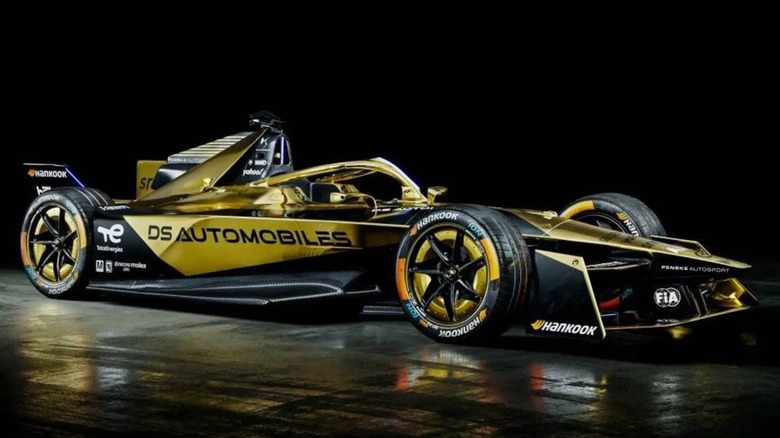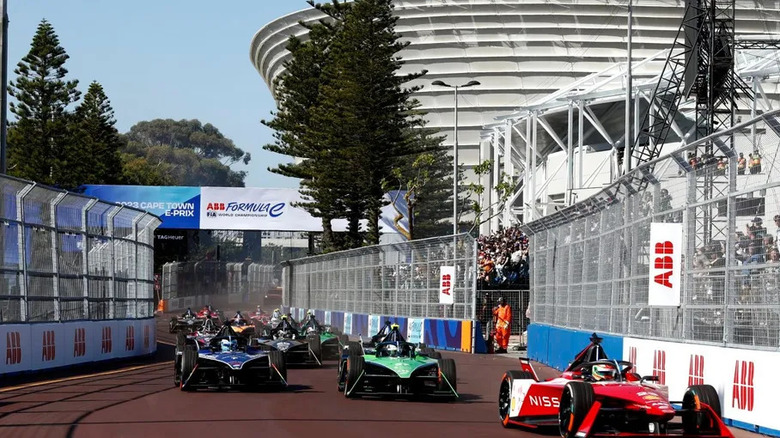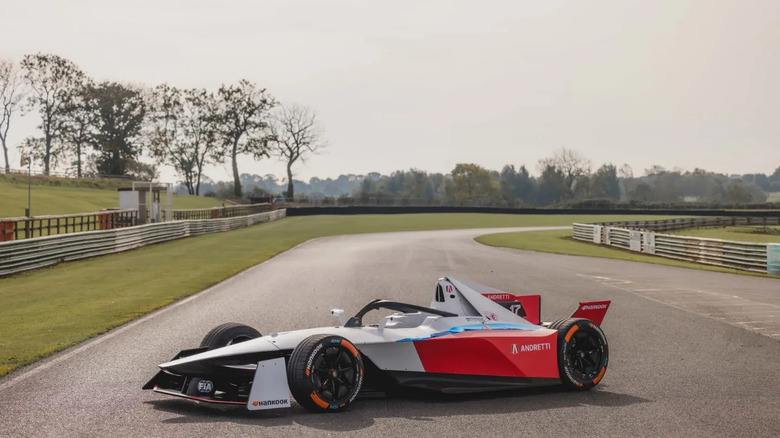Are Formula E Cars Faster Than Formula One? A Look At Their Top Speeds
While Formula 1 and Formula E are titans of motorsports, they represent unique design and racing philosophies. Formula 1 has been thrilling fans since 1950, building on the rich history of Grand Prix racing. Over the past three-quarters of a century, these cars evolved considerably, with more sophisticated aerodynamics, turbocharged engines, and hybrid power units. Racing fans can also now experience the thrill of Formula E, a newer kid on the motorsport block. Formula E launched in 2014 and represents the future with its all-electric racing machines.
While Formula 1 teams each build their own cars, Formula E takes a different path by standardizing chassis designs. But although every Formula E car uses the same Spark Racing Technologies chassis, each new generation brings technological advancements. The Gen2 racing car debuted in the 2018/2019 racing season, followed by the Gen3 car in 2022. The Gen3 Evo car debuted in 2024, with technologies that made it faster and more powerful than those that came before it. But are Formula E cars faster than Formula One versions?
Formula 1 cars have the clear edge in speed over their Formula E counterparts. Modern F1 cars can reach top speeds of approximately 230 mph. In comparison, Gen3 Evo Formula E cars achieve a maximum speed of around 200 mph. But the top-end advantage that Formula 1 cars enjoy isn't the only difference in performance between its cars and those that race in Formula E.
Horsepower, acceleration, and weight also differ
Power output in Formula E cars is considerably lower than in F1 cars, which in 2014 began utilizing hybrid powertrains consisting of a 1.6-liter V6 turbocharged engine and battery assistance. Those engines replaced a hybrid V8 that had ben in place since 2009. Some F1 teams use Honda powertrains, which produce over 1,000 horsepower. Formula E cars, which are entirely electric, produce about 470 horsepower.
Formula 1 cars get from 0 to 60 mph from a standstill in 2.1 to 2.7 seconds, while the newest Formula E Gen3 Evo race car can do that same sprint in 1.82 seconds. This makes it the quickest-accelerating FIA single-seater race car ever, surpassing current Formula 1 cars by about 30%.
Under 2024 regulations, a Formula 1 car — including the driver — must weigh a minimum of 798 kg (1,759 pounds). Meanwhile, a Gen3 Formula E car weighs around 840 kg (about 1,850 pounds) with the driver. That's a touch lighter than the Gen2's 903 kg (about 1,990 pounds).
Enhancements in Formula E's Gen3 Evo Race Car
The newest Formula E car comes with aerodynamic and structural improvements that include a new body kit. These upgrades give the Gen3 Evo an estimated 2% performance gain over the previous Gen3 model— translating to lap times two seconds faster on the fabled Monaco circuit. While Formula 1 cars can cost upwards of $15 million to build, regulations cap the cost of a Formula E car at 890,000 Euro (about $929,000).
For the first time in history, Formula E cars feature four-wheel drive, which is available during critical race moments such as starts, qualifying duels, and Attack Mode, which adds 67 horsepower. The Gen3 Evo's 600 kW battery capacity generates nearly 50% of the energy required during a race. It's paired with an electric motor that delivers over 95% efficiency — a stark contrast to the 40% efficiency of most internal combustion engines.
Race formats and chassis
Most Formula 1 races cover distances of one lap over 305 km (189.5 miles)and last between 1.5 and 2 hours. Formula E races are shorter, with a maximum duration of 45 to 60 minutes and a distance of less than 100 km (about 62 miles). Pit stops are critical in Formula 1 races, where teams change tires in 2 to 2.5 seconds. Formula E cars don't require mid-race tire changes due to the all-weather Hankook iON tires, which are durable enough to last an entire race. These tires are constructed from 45% sustainable materials, and give the Gen3 Evo car capability across varied track conditions.
Standardizing the Formula E chassis keeps costs down and eliminates expensive aero development. Formula 1 cars emit noise and CO2, though efforts to introduce carbon-neutral fuels by 2026 are underway as part of the sport's goal to achieve carbon neutrality by 2030. By contrast, Formula E cars produce no emissions and generate significantly less noise, making them ideal for street racing environments.



